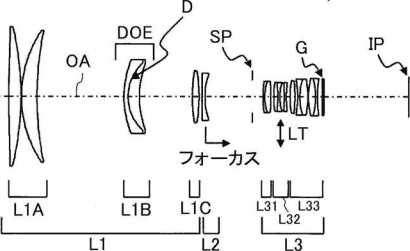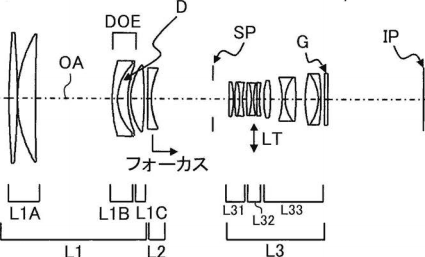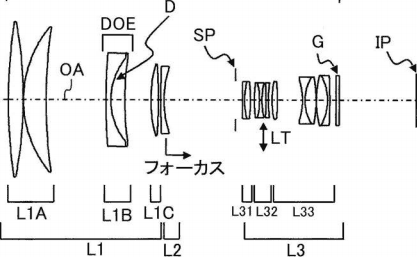More patent news coming from Canon side, A bunch of new DO (Diffractive Optics) patent surfaced over the web – 500mm f/4, 500mm f/5.6, 600mm f/4, 800mm f/5.6, more details translated by google below
Description and self-interpretation of the patent literature
- Patent Publication No. 2013-92575
- Publication date 2013.5.16
- Filing date 2011.10.24
- Example
embodiment No. Focal length [mm] Fno. Half angle [°] Total length [mm] BF [mm] Front lens diameter [mm] One 584.99 4.12 2.12 420.00 89.03 141.99 Two 779.99 5.80 1.59 460.00 97.84 134.48 Three 488.99 4.11 2.53 320.00 61.00 119.00 Four 488.99 5.70 2.53 280.01 65.01 85.79 Five 584.96 4.12 2.12 420.00 88.88 141.98 Image height 21.64mm
- How to reduce the size of the large-aperture super telephoto lens
- Effective diameter of the first group with the largest
- I reduce the number of the first group
- It is necessary to reduce aberration by increasing the number
- Can not reduce the aberration and reduce the number
- I increase a refractive power of the first group
- The thickness of the lens increases, the effect of weight reduction is canceled
- Impact of manufacturing error is large high refractive index
- Canon patent
- The aspherical in the first group
- Performing a variance of sensitivity was composed of opposite sign component of the first group, and also, prevent an increase in thickness
- DOE is provided to correct chromatic aberration with a small number of lenses
- Inner focus
- Anti-shake
About DO Lenses
Diffraction is an optical phenomenon in which light waves bend as they pass around the edges of an object. In the late 1990s, a team of young Canon engineers came up with the idea of using this phenomenon to counteract chromatic aberration.
A single diffractive optical (DO) element features diffractive gratings – very fine parallel grooves on the surface – which change the direction of light. However, this process generates diffracted light that is not suitable for photographic lenses and can cause flaring.
Employing multiple DO elements ensures that nearly all light allowed to pass through the DO elements can be used for photography. Canon DO lenses use multiple DO elements whose diffractive gratings are bonded face-to-face. Combining this arrangement with a refractive convex lens almost completely cancels out chromatic aberration while allowing the lens elements to be placed much closer together within the lens barrel. The result is a high performance EF lens that’s significantly shorter and lighter than typical refractive lenses. In fact, the EF 400mm f/4 DO IS USM is 27% smaller and 31% lighter than a conventional 400mm f/4 lens would be.
Fast becoming a favourite with sports and news photographers, DO lenses are making high performance telephoto shooting easier and more manageable than ever before.










